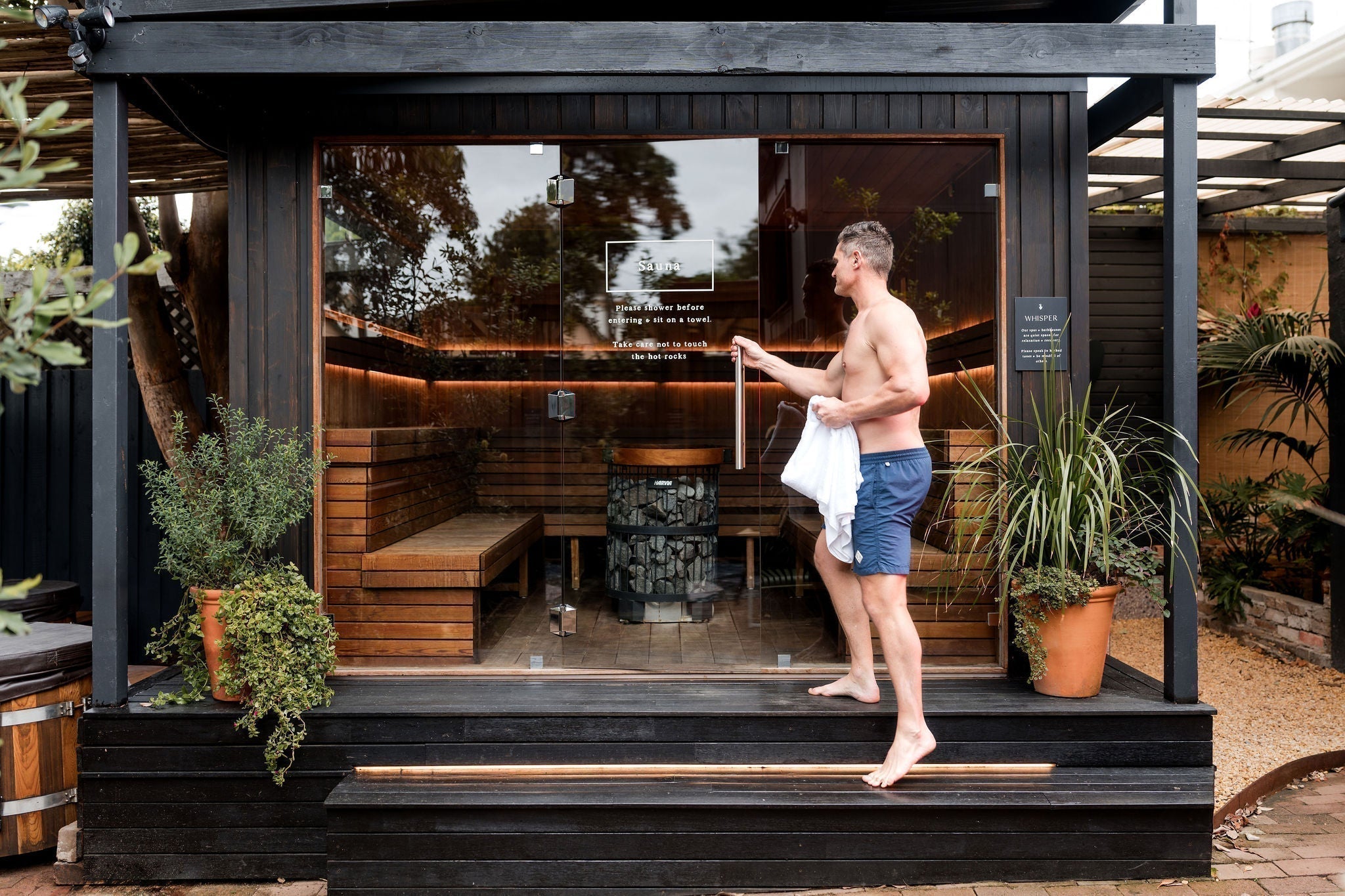Recovery isn’t a reward. It’s essential.
Whether you’re training hard, juggling stress, healing from burnout, or simply aiming to feel better in your body, strategic recovery practices—like ice baths, infrared sauna, red light therapy, and massage—are some of the most effective tools available.
With interest exploding in practices like contrast therapy and ice baths in Sydney, many are asking:
-
Do ice baths work the same for men and women?
-
How should women approach cold exposure?
-
What are the hormonal benefits of sauna and red light therapy?
This blog explores the science—drawing on experts like Dr. Andrew Huberman, Wim Hof, Joe Rogan, Dr. Stacy Sims, and Dr. Susanna Søberg—plus practical tips for starting your recovery ritual at Nature’s Energy.
What are the benefits of ice baths?

An ice bath (or cold plunge) involves immersing your body in water between 7–10°C. Just 1–3 minutes can create a cascade of recovery and resilience benefits:
Physical Benefits
-
Reduces inflammation and muscle soreness
-
Enhances circulation and lymphatic drainage
-
Activates brown fat, boosting metabolism
-
Supports immune response
Mental Benefits
-
Boosts dopamine by up to 250%
-
Increases focus, motivation, and stress tolerance
-
Supports nervous system regulation
Dr. Andrew Huberman calls cold exposure "one of the most potent tools to improve baseline dopamine and train the nervous system to handle real-world stress."
Do men and women respond differently to ice baths?
Yes. The physiological response to cold exposure varies by sex, due to differences in skin, fat, and hormonal systems.
How ice baths affect men
-
May boost testosterone and improve post-workout recovery
-
Faster drop in core temperature due to lower subcutaneous fat
-
Stronger acute dopamine surge supports focus and drive
Joe Rogan, a vocal advocate for cold plunges, shares his daily cold therapy routine for mental clarity and mood regulation.
How ice baths affect women
According to Dr. Stacy Sims, women benefit from cold exposure, but timing and duration matter more:
-
Higher subcutaneous fat slows cooling → longer exposure may be needed
-
Best tolerated in the follicular phase (days 1–14 of cycle)
-
During luteal phase (post-ovulation), shorter cold exposure is advised
-
May help reduce PMS-related inflammation and improve mood
“Women aren’t less capable—just different. Cold therapy is highly beneficial when it works with, not against, the menstrual cycle.” – Dr. Sims
What is contrast therapy?
Contrast therapy combines heat (like sauna) with cold (ice bath), used in cycles to create a powerful vascular and hormonal effect.
Typical Sequence:
-
Sauna (10–15 min)
-
Ice bath (1–3 min)
-
Rest, then repeat for 2–3 rounds
Benefits of Contrast Therapy
-
Improves circulation and vascular elasticity
-
Triggers heat shock and cold shock proteins that aid repair
-
Flushes metabolic waste and lactic acid
-
Reduces stress and supports deep relaxation
Dr. Susanna Søberg, author of Winter Swimming, shows that combining heat and cold increases dopamine, noradrenaline, and supports metabolic health in both men and women.
View her research.
Ice bath vs. ice bath and sauna — what’s better?
Both are beneficial—but together, they create a synergistic recovery effect.
-
Infrared saunas relax muscles, increase circulation, and stimulate detoxification
-
Ice baths reduce inflammation and train the nervous system
-
Back-to-back exposure builds resilience, supports sleep, and improves mood
For both men and women, combining sauna and cold plunge delivers greater hormonal and cardiovascular benefits than either alone.
Is red light therapy good for recovery?

Yes. Red light therapy (also called photobiomodulation) uses specific wavelengths of red and near-infrared light to stimulate mitochondria—the energy-producing part of your cells.
Red Light Benefits
-
Reduces inflammation
-
Speeds up muscle recovery and wound healing
-
Stimulates collagen and supports skin health
-
Helps regulate sleep-wake cycles
-
May support hormone function and cellular longevity
“Red light accelerates repair, reduces pain, and supports hormonal ageing—especially relevant for women post-35.”
– Dr. Jennifer Garrison, Buck Institute
At Nature’s Energy Glebe, your bathhouse visit includes access to our Red Light Therapy Room—Sydney’s only in-spa RLT experience included with admission.
Is cold exposure safe for everyone?
Yes—for most people—but proceed gently if you are:
-
Pregnant (not recommended, and pregnant women are not permitted in the bathhouse at Nature's Energy, for safety reasons)
-
Underweight
-
Managing cardiovascular conditions
-
Diagnosed with Raynaud’s disease
Start here:
-
30–60 seconds in cold plunge
-
No hot showers immediately after
-
Breathe deeply and stay still
-
Work up to 2–3 sessions per week
Where can I try an ice bath in Sydney?

You can access ice baths in Sydney at both our Glebe and Newtown bathhouse locations, as part of a comprehensive recovery ritual that includes:
-
Infrared and traditional saunas
-
Steam rooms
-
Hot spas or mineral pools
-
Red light therapy (coming soon to Newtown)
-
Our day spas also offer massage, facials, and spiritual reading and healing services
Our facilities are quiet, clean, inclusive—and designed to support whole-person wellness, not just short-term relief.
The Balmain Bathhouse is currently under renovation with an aim to reopen in August 2025, with all facilities included.
How to start your recovery ritual
Here’s a balanced weekly plan that works for all bodies—whether you train, parent, sit at a desk, or need to unwind:
Weekly Wellness Ritual
-
1x Contrast Therapy Session (90 mins):
-
15 mins sauna
-
1–2 mins ice bath
-
Repeat 2–3 rounds
-
10 mins Red Light Therapy
-
-
1x Massage (60 mins):
-
Deep tissue or remedial massage for stress and pain relief
-
-
Daily habits:
-
Walks, breathwork, gentle movement
-
7–8 hours sleep
-
Less screen time, more sunlight
-
Final Thoughts: Every Body Deserves Recovery
Whether you’re seeking energy, clarity, hormonal balance or deep calm, cold, heat and light therapy can be powerful allies. At Nature’s Energy, we’re proud to offer inclusive spaces that support every phase of life.
When you give your body the time and tools to recover, you build true resilience.




Leave a comment